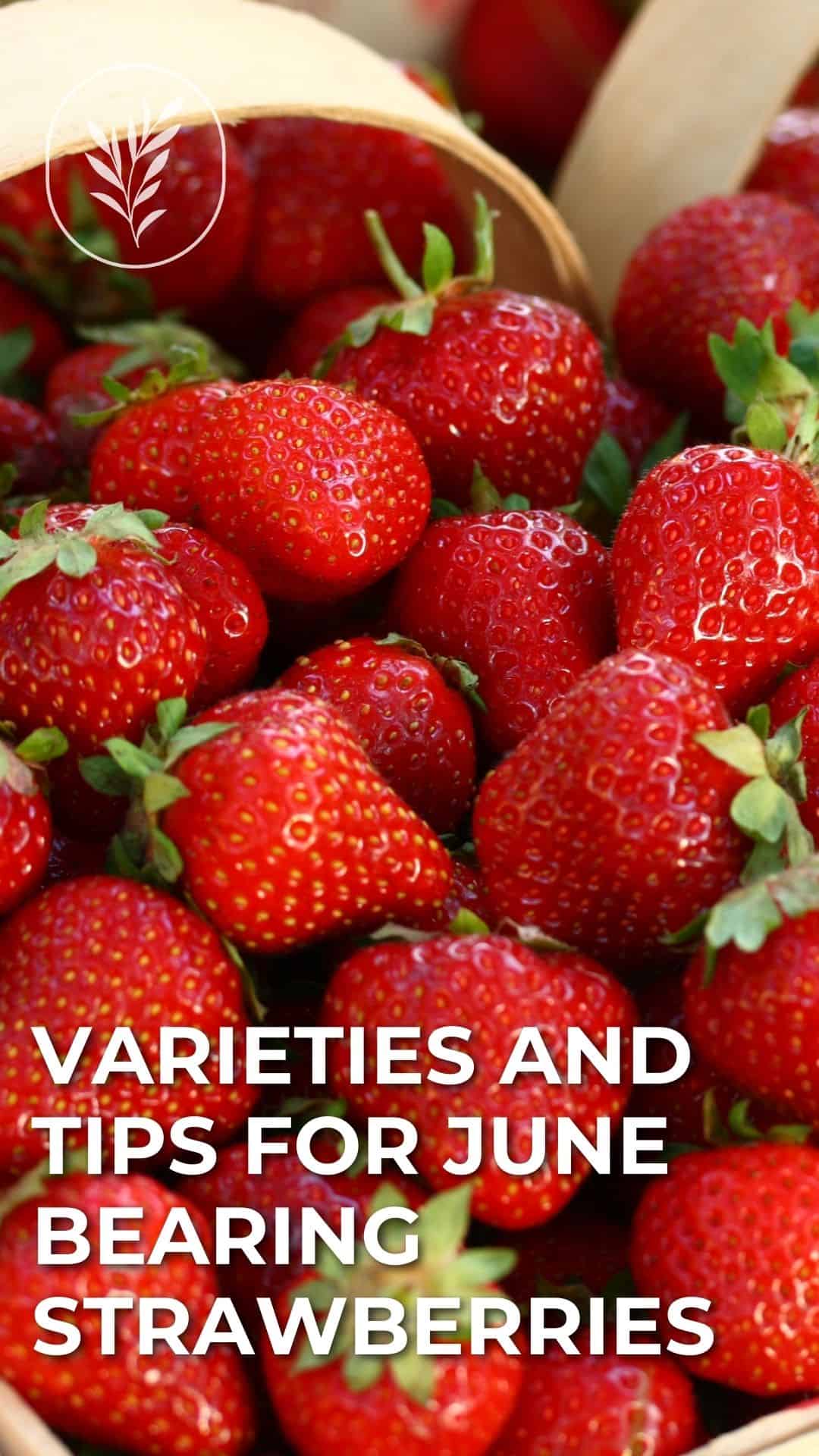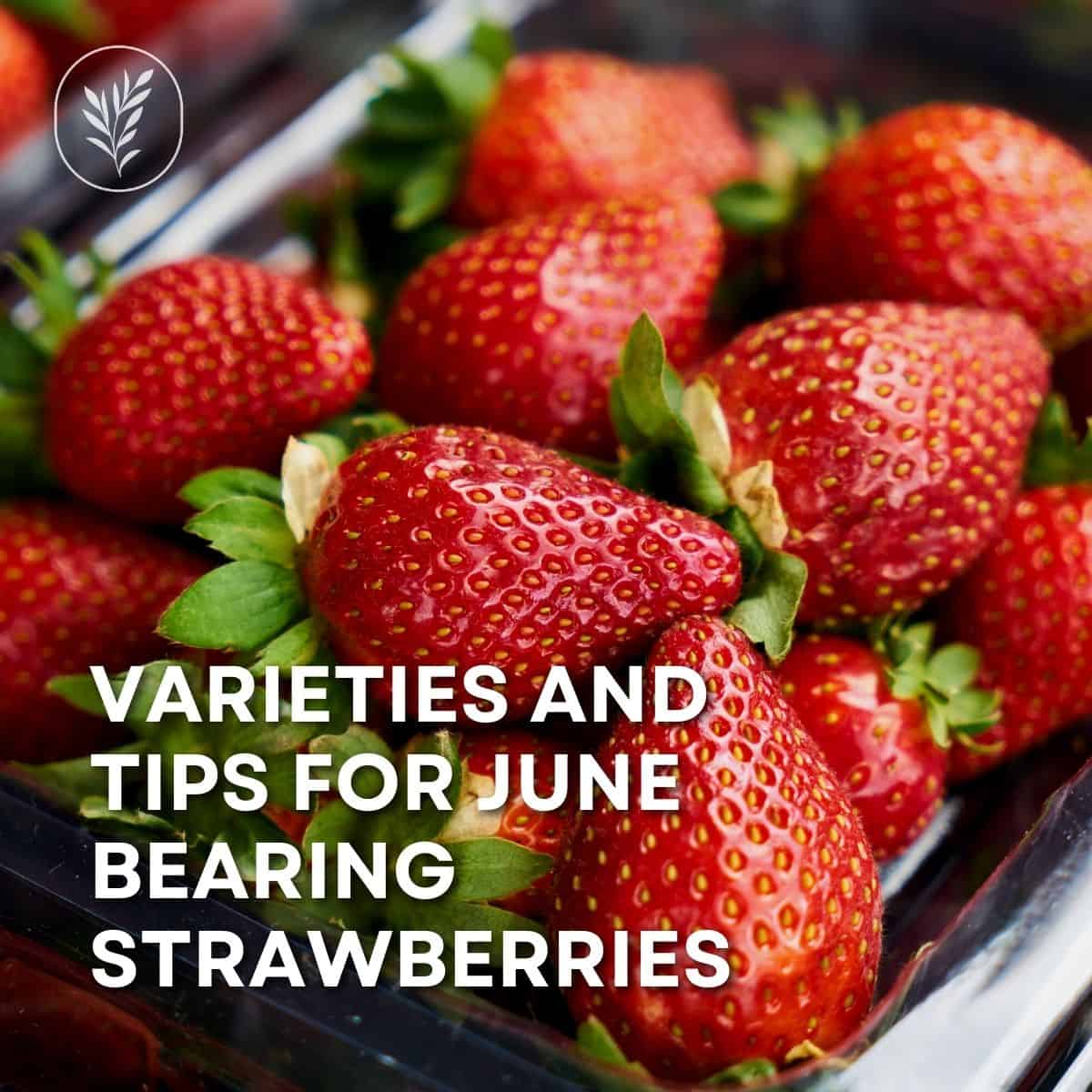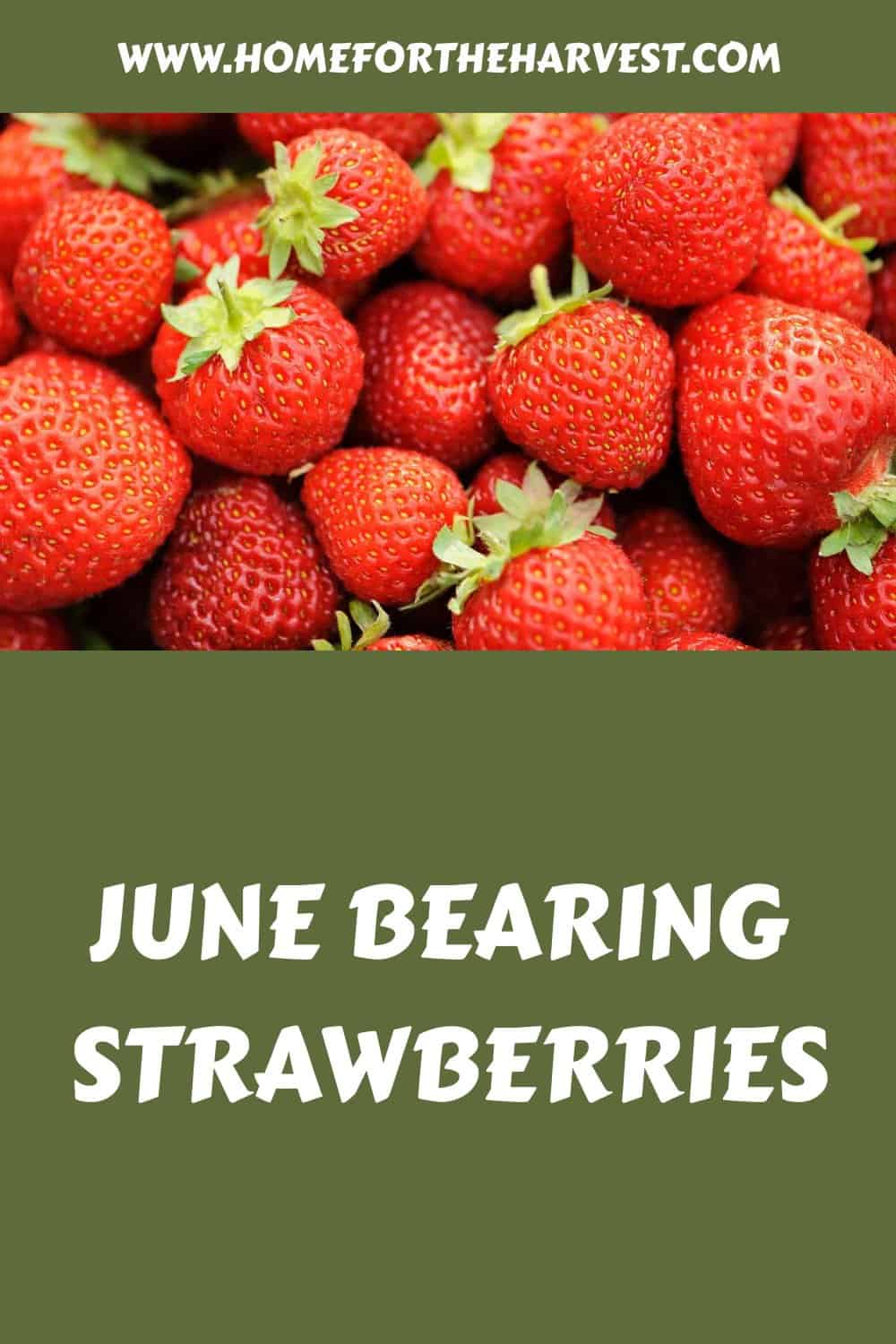Interested in growing June bearing strawberries? This category tends to have the most flavorful berries, even if the plants do take a bit more work than everbearing types. These heat-tolerant plants produce delicious and juicy berries once per growing season and are fairly easy to maintain.
June bearing strawberries are a category of strawberry plant that produces a large crop of fruit all at once, typically in the month of June (hence the name). These cold-hardy plants typically have a shorter growing season than other types of strawberries, such as everbearing strawberries. They are typically grown in rows with mulch. June-bearing strawberries tend to have a higher yield and sweeter, more flavorful fruit than other types.
Continue reading to see how simple it is to grow strawberries in your garden. Maintain them using the tips and tricks below and choose from some of the most popular varieties on the market.
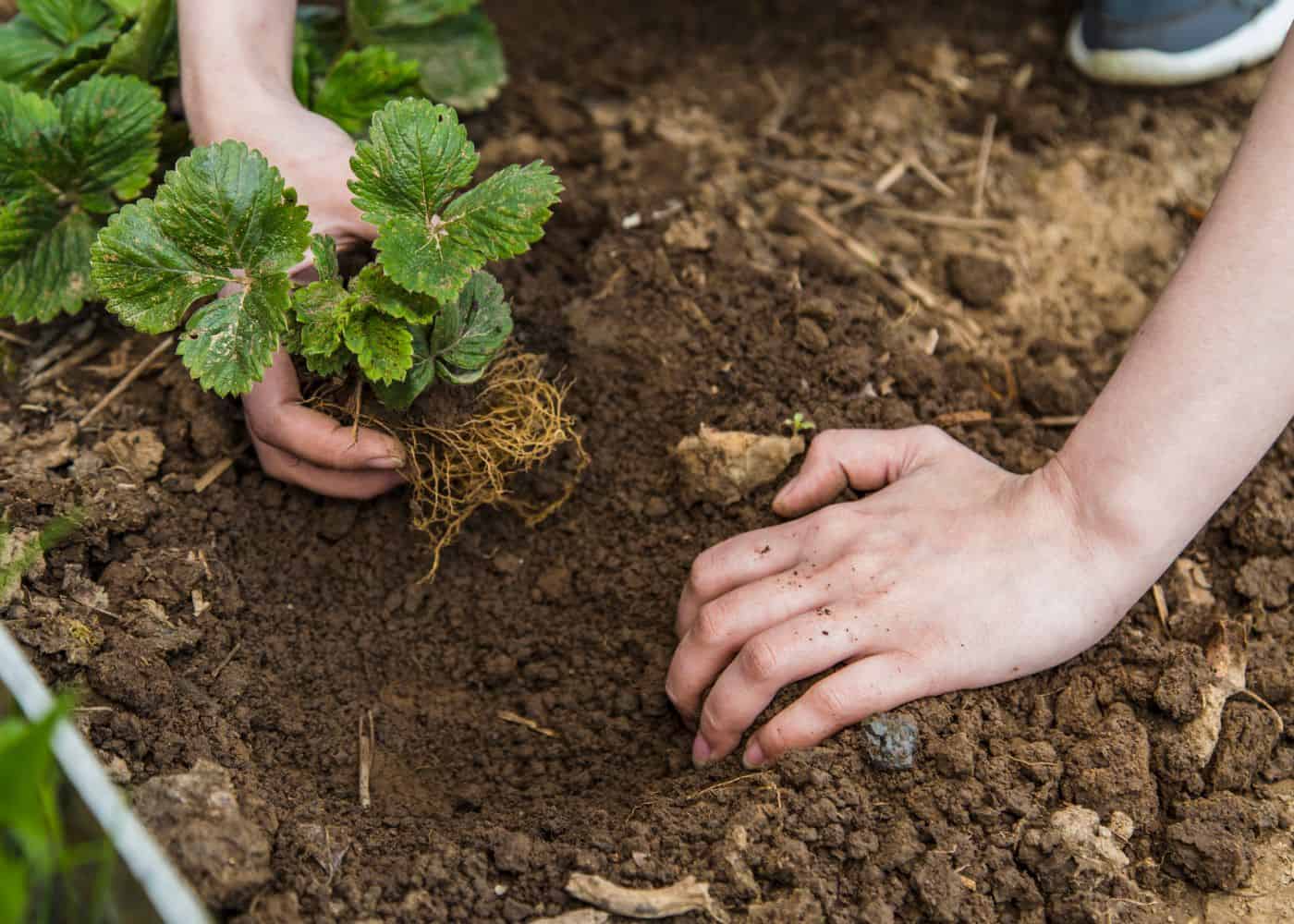
What are June bearing strawberry plants?
June bearing cultivars of strawberries grow their flower buds in early fall when the days become shorter. They typically set buds in late August through September, before going dormant for wintertime. June bearing cultivars tend to have a long winter dormancy. In the spring, the plants come out of dormancy, the flower buds open, and the flowers are pollinated by beneficial insects. Depending on the variety, strawberries take about a month to form once the flowers have been pollinated.
Planting June bearing strawberries in matted rows
June bearing cultivars are most commonly planted in a matted row system. Plant spacing is typically 18 inches apart (and usually within the range of 12-24 inches) within the row. Rows are 3-4 feet apart. Each plant is allowed to grow a few runners, which fill in the spaces between the plants. Matted rows of strawberries are generally kept to 12-18 inches wide to allow for easy harvesting.

Popularity of June-bearers
June-bearing plants are delicious and extremely popular because of the quality of the fruit they produce. In the commercial world, these are the most commonly used category. June-bearing strawberries only produce one crop each season compared to other varieties that produce multiple yearly. Because of this, gardeners pinch back any flowers and runners to allow healthy growth for that one crop.
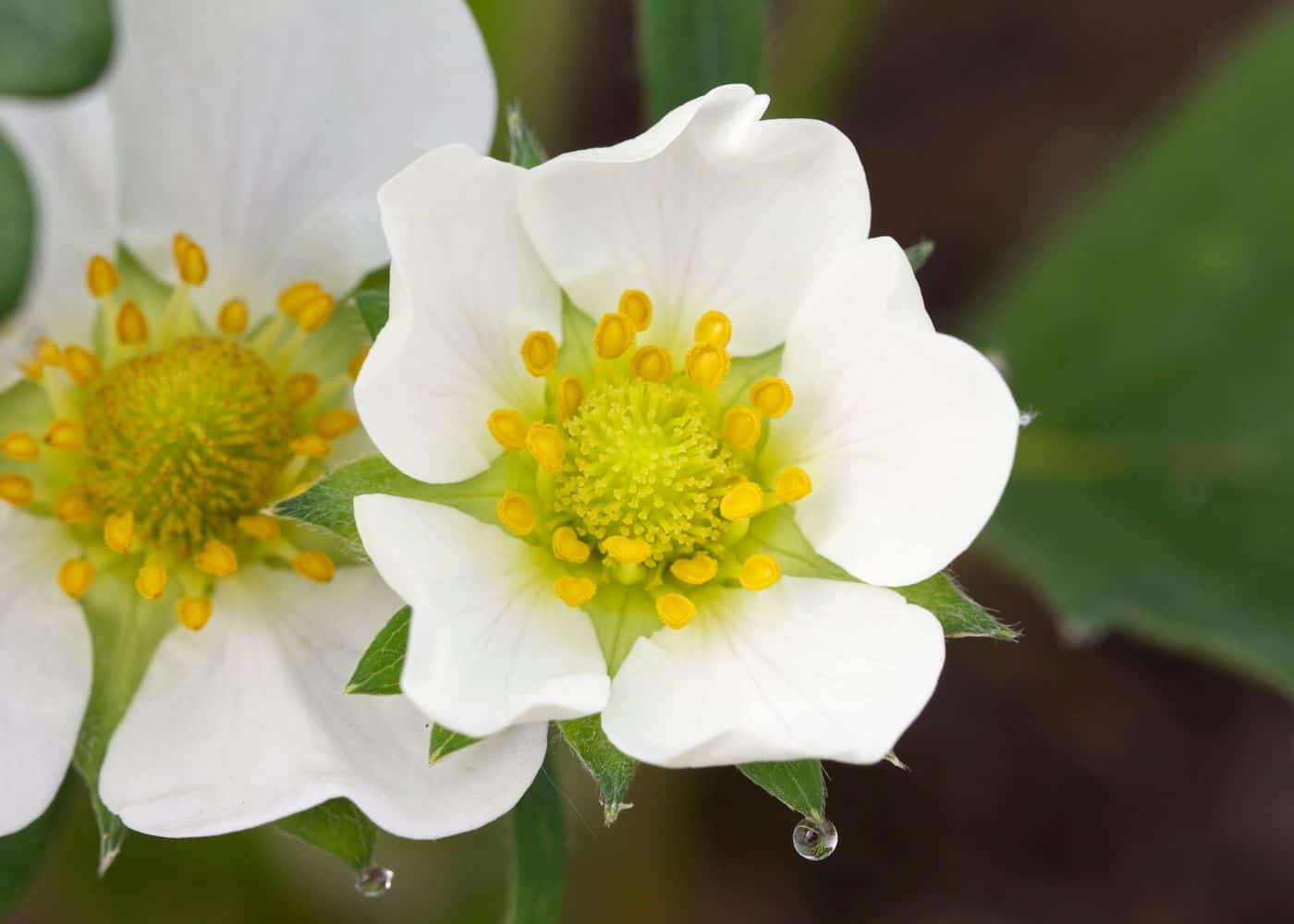
Classifications of strawberry plant
There are two main classifications in the strawberry world. These included Everbearing strawberries or Day-Neutral Strawberries, and June-bearing Strawberries. You won’t be able to tell the difference between the three just by looking at them; you will have to rely on proper labeling and classification from the nursery (or careful observation at home).
Over time, you will notice different growing habits between the types of strawberries, but until then, make sure you label them appropriately and well. June-bearing strawberries produce berries only once a year. Day-neutral strawberries produce berries over a longer harvest season and are often producing berries right up until frost.
Growing June-bearing strawberries
Plant your rows of strawberries about 3-4 feet apart. Each plant should be spaced out 18 inches with straw mulch under and around the plants. This keeps the fruit from touching the soil. It also helps the soil retain moisture and keep weeds out.
If possible, provide soil with a pH level between 5.5 and 6.8. Give the plants 6 hours or more of sun each day, as they prefer full sun. If the soil you are planting on is clay-like, consider installing raised beds to provide well-drained soil. The higher ground also warms more quickly, allowing you to plant your seeds earlier in the spring.
Give your plants about 1 inch of water per week during the growing season. Use a drip irrigation system to make watering easier and to keep the leaves as dry as possible. Remove your plants every 2 to 3 years to replace them with new crops.
Fertilize your plants every two weeks using a fruit fertilizer or a slow-release fertilizer in early spring. The fertilizer will ensure your plants have optimal nutrients all season long.
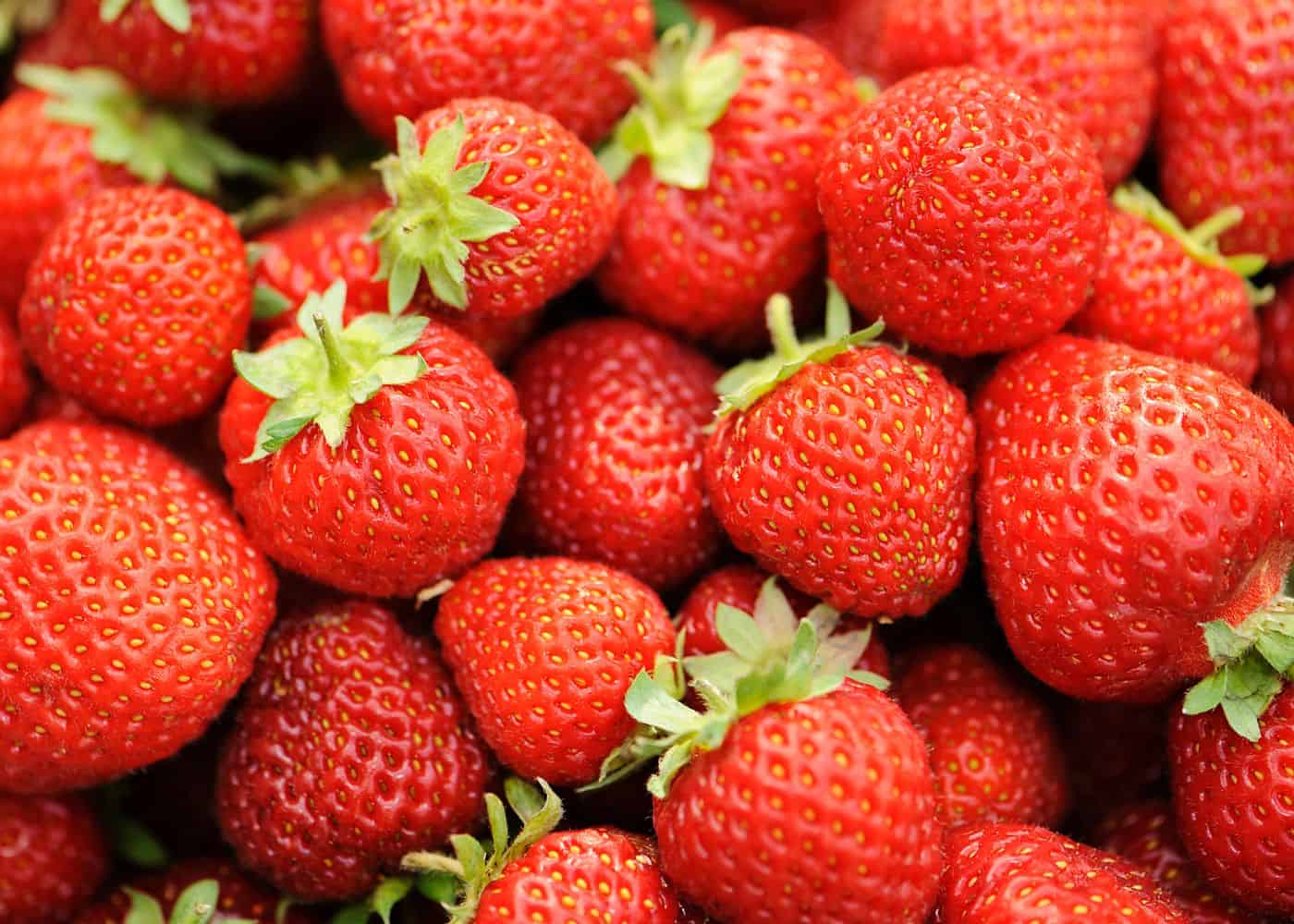
Popular June bearing strawberry varieties
As you select your berries, consider using these popular varieties in your garden.
- Honeoye
- Jewel
- Chandler
- Totem
- Hood
- Earligrow
- Delmarbel
- Seneca
- Cavendish
- Annapolis
- Eclair
- Kent
- Allstar
Planting and maintaining tips
When planting your strawberries, cover all roots on each plant, leaving the crown at the ground level. Remove all blossoms that form the first year to allow the plants to put some roots down for upcoming seasons. The first year won’t produce as much as subsequent years.
When your plants send out runners, cut them back to only allow three per plant to remain. Space your plants out about 6 inches to they have plenty of room to grow. As soon as temperatures start to dip (20 degrees or less), mulch your strawberry plants with straw, shredded leaves, evergreen boughs, or any other type of mulch. This will protect them from frost.
When it’s time to cut them back for winter, cut them down to about 1 inch above the ground, leaving just the crown for the next year. Use a lawnmower to do this quickly if you can.
Things to avoid
Avoid planting your strawberry plants near tomatoes, peppers, potatoes, or eggplants, as these can spread verticillium and wilt your plants.
Avoid standing water, as the added moisture can result in plant rot and other diseases that aren’t good for your fruit production.
Your plants will die if the crown is too far above the ground or covered in too much dirt. Pay attention to how you plant them and how you lay your mulch to ensure maximum fruit production.
If practical, don’t plant your strawberries where grass previously grew; this may draw in grubs and other pests.
FAQs about growing June-bearing strawberries
How do I plant June-bearing strawberries?
To plant June-bearing strawberries, choose a sunny location with well-draining soil. Start by preparing the soil by removing weeds and adding compost or well-rotted manure to improve the soil structure.
Plant the strawberries in rows, spacing the plants about 18 inches apart (with about 4′ spacing between planting lines). Water the plants well after planting and mulch with straw or wood chips to help keep the soil moist and suppress weeds.
How do I care for June-bearing strawberries?
To care for June-bearing strawberries, make sure to keep the plants well-watered, especially during dry spells. Fertilize the plants with a balanced fertilizer every few weeks during the growing season.
Keep the area around the plants weed-free to prevent competition for nutrients and water. Prune off any dead or damaged leaves to help keep the plants healthy.
How do I propagate June-bearing strawberries?
To propagate June-bearing strawberries, you can use runners for the simplest multiplication. Allow a runner to grow out from the main plant and anchor it down with a small rock or forked stick. Once the runner has rooted, cut the string between the two plants so the new plant is disconnected from the main plant. You can then leave the new plant or transplant it.
Can June-bearing strawberries be grown in containers?
Yes, June-bearing strawberries can be grown in containers. Choose a container that is at least 12 inches deep and has drainage holes. Use a soil-less potting mix and plant the strawberries in the same way as you would in a garden bed.
You can usually space them closer, as you can just trim off runners (and repot them if you like). Water the plants regularly and fertilize every few weeks with a balanced fertilizer.


